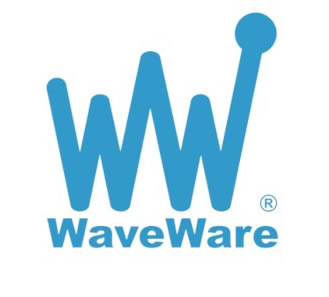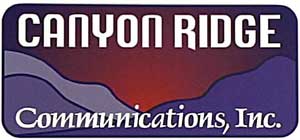Selected portions of the BloostonLaw Telecom Update, and/or the BloostonLaw Private Users Update — newsletters from the Law Offices of Blooston, Mordkofsky, Dickens, Duffy & Prendergast, LLP are reproduced in this section with the firm’s permission.
| BloostonLaw Telecom Update | Vol. 18, No. 6 | February 11, 2015 |
FCC Issues Warning Not to Miss Annual CPNI Certification DeadlineOn February 9, the FCC’s Enforcement Bureau issued an Enforcement Advisory reminding telecommunications carriers and interconnected VoIP providers of their obligation to file, by March 1, their annual reports certifying compliance with the FCC’s rules protecting Customer Proprietary Network Information. Failure to comply with the CPNI rules, including the annual certification requirement, may subject carriers to enforcement action, including monetary forfeitures of up to $160,000 for each violation or each day of a continuing violation, up to a maximum of $1,575,000. The Enforcement Advisory points out that CPNI certifications must be filed by March 1 of each year. Since March 1 falls on a Sunday this year, the annual CPNI report and certification would normally be due by Monday, March 2 under the FCC’s rules for deadlines that fall due on a weekend. However, in light of the harsh consequences of a missed filing and the Enforcement Advisory, BloostonLaw encourages clients to file early, i.e., on or before Friday February 27. Headlines
Comments Filed on IntraMTA Petition for Declaratory RulingOn February 9, initial comments were submitted on the November 10, 2014 Petition for Declaratory Ruling filed by a group of rural local exchange carriers (LECs), in which they asked the FCC to confirm that the intraMTA rule does not apply to LEC charges billed to an inter-exchange carrier (IXC) when the IXC terminates traffic or receives traffic from a LEC via tariffed switched access service. Reply comments are due March 11, 2015. The Petition was prompted by numerous lawsuits filed against a large number of LECs by IXCs (primarily Sprint and Verizon); and comments predictably fell along party lines, with LECs supporting the Petition and IXCs opposing it. LEC comments, which included filings by NECA, WTA, ERTA, and NECA; ITTA; several state-wide telephone associations; and multiple individual LECS, primarily argued that the intraMTA rule simply does not apply to traffic exchanges between LECs and IXCs, but rather only to traffic exchanged between LECs and commercial mobile radio service (CMRS) providers, per the language in the FCC’s Local Competition Order and the USF/ICC Transformation Order. Further, the LECs argue, even if the rule did apply, the IXCs failed to take any of the actions necessary to meet the rule’s cooperation requirements. The LECs also argued that the IXCs have been paying access bills for years without complaint, and that the IXC’s refusal to pay current invoices involved in the dispute amounts to unjust and unreasonable “self-help” activity. IXC comments, which included separate filings by Sprint, Verizon, and CTIA, essentially argue that intraMTA traffic is not subject to access charges regardless of whether an IXC is involved at any point in the exchange. According to the IXCs, interMTA inter-exchange traffic would be subject to access charges, but not intraMTA inter-exchange traffic, citing to decisions in the Eighth, Ninth, and Tenth circuits as well as the FCC’s USF/ICC Transformation Order. While the IXCs also argue that their past payments do not justify the imposition of access charges on the traffic in question, none of the IXC comments address the cooperation requirement. The Commission's action on the Petition should resolve the primary legal question in the pending lawsuits and possible future lawsuits based on this claim. Accordingly, all LECs will be impacted by this proceeding. FCC Sides with LECs in Declaratory Ruling on VoIP SymmetryOn February 11, the FCC released a Declaratory Ruling in which it held that the VoIP Symmetry rule adopted in the USF/ICC Transformation Order is technology and facilities neutral, and therefore does not require a competitive LEC or its VoIP provider partner to provide the physical last-mile facility to the VoIP provider’s end user customers in order for the competitive LEC to be eligible to assess access charges for this service. The VoIP symmetry rule, codified in section 51.913(b) of the Commission’s rules, permits a local exchange carrier to assess and collect Reciprocal Compensation charges regardless of whether the local exchange carrier delivers the traffic itself or uses a VoIP provider to do so, as long as the VoIP provider does not itself seek to collect the Reciprocal Compensation charges. However, AT&T and Verizon began withholding payment for certain access elements when LECs partnered with over-the-top VoIP providers (like Vonage) that do not have their own facilities, on the grounds that without physical last-mile facilities owned by the VoIP partner, neither the competitive LECs nor their VoIP provider partners were providing either end office switching or the “functional equivalent” of end office switching necessary to qualify for Reciprocal Compensation under the VoIP symmetry rule. In the Declaratory Ruling, the FCC held that this position was contrary to both the language of the VoIP symmetry rule and the policies underlying its adoption, and clarified that the rule is technology and facilities neutral. Commissioners Pai and O’Rielly Erupt Over Net Neutrality Fact SheetLast week, the BloostonLaw Telecom Update reported on a Fact Sheet issued by the FCC on the draft Net Neutrality Order circulating among the Commissioners ahead of the February 26 vote. This week, Commissioners Pai and O’Rielly issued statements calling the Fact Sheet misleading, and stating some of the concerns they have with the proposed Order. In a rather scathing statement, Commissioner Pai stated that the document, reportedly 332 pages, is “worse than [he] had imagined.” Pai then went on to point out six major areas in which the actual document strays from what the Fact Sheet suggests. First, according to Pai, the plan gives the FCC the authority to regulate Internet rates through the “unjust and unreasonable” provisions of Sections 201 and 202 of the Communications Act. Second, Pai states that the plan expressly states that usage-based pricing will be subject to regulation and is therefore “on the chopping block.” Third, the plan reportedly gives the FCC broad regulatory power, including the ability to determine “when a broadband provider must establish physical interconnection points, where they must locate those points, how much they can charge for the provision of that infrastructure, and how they will route traffic over those connections.” Fourth, Pai says that the plan allows for class-action lawsuits over network management practices. Fifth, Pai notes that although the FCC forbears from some Title II regulation, forbearance is temporary and may fade. And sixth, Pai states that the plan only defers a decision on new broadband taxes, and does not prohibit them. Commissioner O’Rielly’s comments focused primarily on claims that the Order will grant forbearance from much of Title II — or in his own words, “fauxbearance.” O’Rielly indicates he is “troubled by the implications of section 201(a), which requires common carriers to provide service upon “reasonable request” and empowers the Commission to order carriers “to establish physical connections” and “through routes”. In other words, the Commission could demand that ISPs provide service, including “interconnection.” Nowhere, says O’Rielly, is this mentioned in the Fact Sheet. Like Pai, O’Rielly foresees more regulation coming in the future. Congressional Committees Probe White House/FCC Communications on Net NeutralityOn February 6, Rep. Jason Chaffetz (R-Utah), Chairman of the Committee on Oversight and Government Reform, sent a letter to Chairman Wheeler indicating his concern that views expressed by the White House potentially had improper influence on the development of the draft Open Internet (a.k.a. Net Neutrality) order recently circulated among the Commissioners. The letter requests the FCC to make available by February 20: - copies of all communications between and among FCC personnel and the White House, the National Economic Council, the Office of Management and Budget, and the National Telecommunications and Information Administration relating to Net Neutrality;
- all calendar appointments, visitor logs, or meeting minutes for any meetings between and among the same;
- any and all internal FCC documents discussing or referring to the views, preferences, or recommendations of personnel at the White House, the National Economic Council, the Office of Management and Budget, and the National Telecommunications and Information Administration relating to Net Neutrality; and
- all documents and communications relating to recommendations or views of FCC personnel about Net Neutrality.
Just three days later, Sen. Ron Johnson (R-Wis.), Chairman of the Senate Committee on Homeland Security and Governmental Affairs, sent a letter to Chairman Wheeler asking him to provide by February 23, among other things: - an explanation of what new factors or developments in the telecommunications industry led the Chairman to conclude that the “commercially reasonable” standard proposed in 2014 is no longer appropriate;
- an explanation of why the Chairman “pulled back” a draft proposal on a net neutrality order in 2014 and the timing of that decision;
- the draft proposal on net neutrality that the Chairman originally planned to circulate in or around late November and early December 2014; and
- all documents and communications between or among any employee of the FCC and employees of the Executive Office of the President referring or relating to net neutrality or broadband regulation for the period November 3, 2013, to the present.
Republican lawmakers are concerned that President Obama has put inappropriate pressure on the FCC, which is supposed to be an independent Federal agency. Senate Commerce Committee Chairman John Thune (R - South Dakota) expressed concern that the FCC was succumbing "to the bully tactics of political activists and the president himself." Law & Regulation
FCC Fines Seven Companies $1.2 Million for Slamming and Cramming ViolationsOn February 10, the FCC issued a News Release announcing the settlement of its investigations of seven companies that have admitted to billing consumers for services without their authorization: Business Network Long Distance, Inc., Communications Network Billing, Inc., Integrated Services, Inc., Multiline Long Distance, Inc., National Access Long Distance, Inc., Nationwide Long Distance Service, Inc., and Network Service Billing, Inc. According to the News Release, these companies engaged in “slamming” — the act of changing customers’ preferred long distance telephone carriers without authorization — and “cramming” — the act of assessing charges on customers’ telephone bills without their consent. The investigation was the result of more than 150 consumer complaints that were filed over on the seven companies. As part of the settlement, the companies will pay civil penalties totaling $1.2 million dollars, and must adopt comprehensive, rigorous compliance plans going forward to forestall future cramming and slamming violations. FCC Seeks Comment on Removing Certain Outdated Common Carrier RegulationsOn February 6, the FCC issued an NPRM seeking comment on the elimination of certain “outmoded” regulations from the Code of Federal Regulations. Comments will be due 30 days after the Federal Register publication of the NPRM; replies will be due 15 days after comments. Specifically, the Notice proposes to eliminate rules from which the Commission has already granted unconditional forbearance for all carriers: - Section 64.804(c)-(g), which governs a carrier’s recordkeeping and other obligations when it extends to federal candidates unsecured credit for communications service;
- Sections 42.4, 42.5, and 42.7, which require carriers to preserve certain records;
- Section 64.301, which requires carriers to provide communications service to foreign governments for international communications;
- Section 64.501, governing telephone companies’ obligations when recording telephone conversations (but note that other statutes and regulations, such as the Wiretap Act, still govern recording of phone conversations);
- Section 64.5001(a)-(c)(2), and (c)(4), which imposes certain reporting and certification requirements for prepaid calling card providers; and
- Section 64.1, governing traffic damage claims for carriers engaged in radio-telegraph, wire-telegraph, or ocean-cable service.
The FCC also proposes to remove references to “telegraph” from sections 36.126, 54.706(a)(13), and certain sections in Part 63, since telegraph communications no longer exist. Senators Support Long-Term Internet Tax BanThe Hill is reporting that Senate Commerce Committee Chairman John Thune (R-S.D.) and the ranking Democrat on the Finance Committee, Sen. Ron Wyden (Ore.), reintroduced the Internet Tax Freedom Forever Act on February 10, along with 38 co-sponsors — 28 Republicans and 10 Democrats. According to the report, the bill would extend the existing ban on state and local taxation of Internet access and would also bar multiple or discriminatory taxes on e-commerce. “Our bill, which would permanently ban Internet taxation, would encourage more American innovators and entrepreneurs to use broadband to develop the next big thing, while keeping the Internet open and accessible to consumers across the country,” Thune said in a statement. According to The Hill, the ban “has been extended nearly half a dozen times since first enacted in 1998,” with the most recent one-year extension being rolled into the omnibus spending bill, but lawmakers are hoping to remove the sunset date this time around. PSAP Text-to-911 Readiness and Certification Registry Now AvailableThe FCC has announced availability of a new “Text-to-911 Registry” listing PSAPs that are ready to receive text-to-911 messages, and providing notice to CMRS providers and other providers of interconnected text messaging services of the notice date of PSAP readiness. The Registry is in the form of an Excel spreadsheet and is available via the FCC’s web site at: http://www.fcc.gov/encyclopedia/psap-text-911-readiness-and-certification. The Text-to-911 Registry lists each PSAP by FCC PSAP ID and name, the county of operation, the primary point of contact for coordinating text-to-911 service, the method by which the PSAP will accept texts, and the state or local governing entity authorizing the PSAP to accept texts. Under the FCC’s text-to-911 rules, covered text providers must begin routing 911 text messages to requesting PSAPs by June 30, 2015, or within six months of a valid PSAP request, whichever is later. To constitute a “valid PSAP request,” (1) the PSAP must certify that it is technically ready to receive 911 text messages in the format requested; (2) the appropriate local or State 911 service governing authority must have authorized the PSAP to accept and, by extension, the covered text provider to provide, text-to-911 service; and (3) the requesting PSAP must notify the covered text provider that it is both technically ready to receive 911 text messages and has been authorized to accept such messages. We would normally expect that PSAPs will contact and work with CMRS and covered text providers in the process of implementing text-to-911 capability. However, since the Commission has held that registration in the database is one way that PSAPs may trigger text-to-911 obligations, our clients who are covered text providers should periodically review the registry to learn about text-readiness of PSAPs in their service areas and reach out to these PSAPs as necessary to coordinate implementation of text-to-911 service. The Commission has said it will regularly update the Text-to-911 Registry, so our clients may want to bookmark the registry web page and check back on a regular (e.g., monthly) basis for any changes. Industry
White House to Announce Cyberattack AgencyThe Washington Post is reporting that the Obama administration is establishing a new agency tasked with thwarting cyberattacks by sharing intelligence across other agencies in the event of a crisis. The new agency, dubbed the Cyber Threat Intelligence Integration Center (CTIIC), is reportedly modeled after the National Counterterrorism Center, which was launched in the wake of September 11. It will be created as part of the Office of the Director of National Intelligence, and will start off with a staff of about 50 people and a budget of $35 million. The idea for the agency came about when Lisa Monaco, assistant to the President for homeland security and counterterrorism, was investigating the details of the Sony Pictures Entertainment hack. She reportedly called meetings of the key agencies involved in the investigation, including the FBI, the NSA and the CIA, and got six different views of what happened — all pointing to North Korea, but with different degrees of certainty. The gap was then exposed: no one was responsible for an analysis that integrated the different agencies’ views. Calendar At A Glance
February
Feb. 14 – Reply comments are due on Alliance of Rural Broadband Applicants’ Petition for Waiver.
Feb. 17 – Filing deadline for Community Connect grant applications.
Feb. 20 – Comments are due on Part 1 Competitive Bidding NPRM.
Feb. 25 – Reply comments are due on Unlicensed Use of TV Band and 600 MHz Band Spectrum.
Feb. 27 – Deadline for Special Access Data Collection for small businesses with less than 1,500 employees.
Feb. 27 – Reply comments are due on the FCC’s Incentive Auction Procedures. March
Mar. 2 – Copyright Statement of Account Form for cable companies is due.
Mar. 2 – Annual CPNI Certification is due.
Mar. 2 – FCC Form 477 (Local Competition & Broadband Reporting) is due.
Mar. 6 – Reply comments are due on Part 1 Competitive Bidding NPRM.
Mar. 9 – Reply comments are due on Technology Transitions NPRM.
Mar. 9 – Reply comments are due on Windstream Petition for Declaratory Ruling on DS1/DS3 Access.
Mar. 9 – Comments are due on 911 Outage NPRM.
Mar. 11 – Reply comments are due on the IntraMTA Petition for Declaratory Ruling.
Mar. 16 – Deadline to notify AT&T of Service Provided in CAF Phase I Deployment Census Blocks.
Mar. 31 – FCC Form 525 (Delayed Phasedown CETC Line Counts) is due.
Mar. 31 – FCC Form 508 (ICLS Projected Annual Common Line Requirement) is due.
Mar. 31 – International Circuit Capacity Report is due. April
Apr. 1 – FCC Form 499-A (Annual Telecommunications Reporting Worksheet) is due.
Apr. 1 – Annual Accessibility Certification is due.
Apr. 7 – Reply comments are due on 911 Outage NPRM. |





































 David George and Bill Noyes
David George and Bill Noyes

































